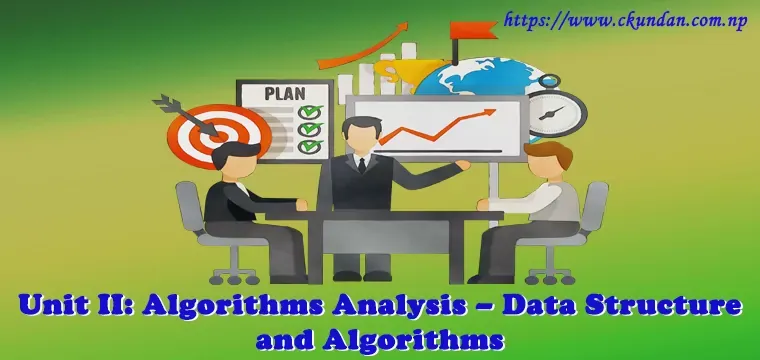Algorithm analysis deals with the execution or running time of various operations involved. The running time of an operation can be defined as the number of computer instructions executed per operation.
In this “Algorithms Analysis – Data Structure and Algorithms” you will learn about the following topics:
- Mathematical Background
- Interval Notation
- Ranges and Mid-Points
- Sum and Product Notation
- Elementary Functions and the Relative Growth of Such Functions
- Two Special Useful Functions - The Floor and Ceiling Functions
- Floor Function, Ceiling Function
- Methods of Proof
- Direct Proof, Indirect
Proof (also called Proof by Contrapositive), Proof by Contradiction, Proof
by Cases, Proof By Special Technique
- Elementary Combinatorics and Factorial Notation
- Addition Principle, Multiplication Principle, Factorial Notation, Number of Permutations, Number of Combinations
- Elementary Discrete Probability
- Equally Likely Outcomes, Certain Probabilities Sum to 1, Joint Occurrence of Independent Events, Joint Occurrence of Dependent Events, Probability Of The Occurrence Of One, Or The Other, Or Possibly Both, Of Two Events, Sample Space, Random Variable, Expectation of a Random Variable, Miscellaneous Useful Formulas
- Algorithm
- Characteristics of an Algorithm
- How to Write an Algorithm?
- Algorithm Analysis
- Algorithm Complexity, Space Complexity, Time Complexity
- Asymptotic Notations
- Big Oh Notation (Ο), Omega Notation (Ω), Theta Notation (θ)
- Common Asymptotic Notations
==== Point to Note ====
If you like to contribute, you can mail us BCA Notes, BCA Question Collections, BCA Related Information, and Latest Technology Information at [email protected].
See your article appearing on BCA Notes (Pokhara University) main page with your designation and help other BCA Students to excel.
Please write comments if you find anything incorrect, or you want to share more information about the topic discussed above.








0 Comments